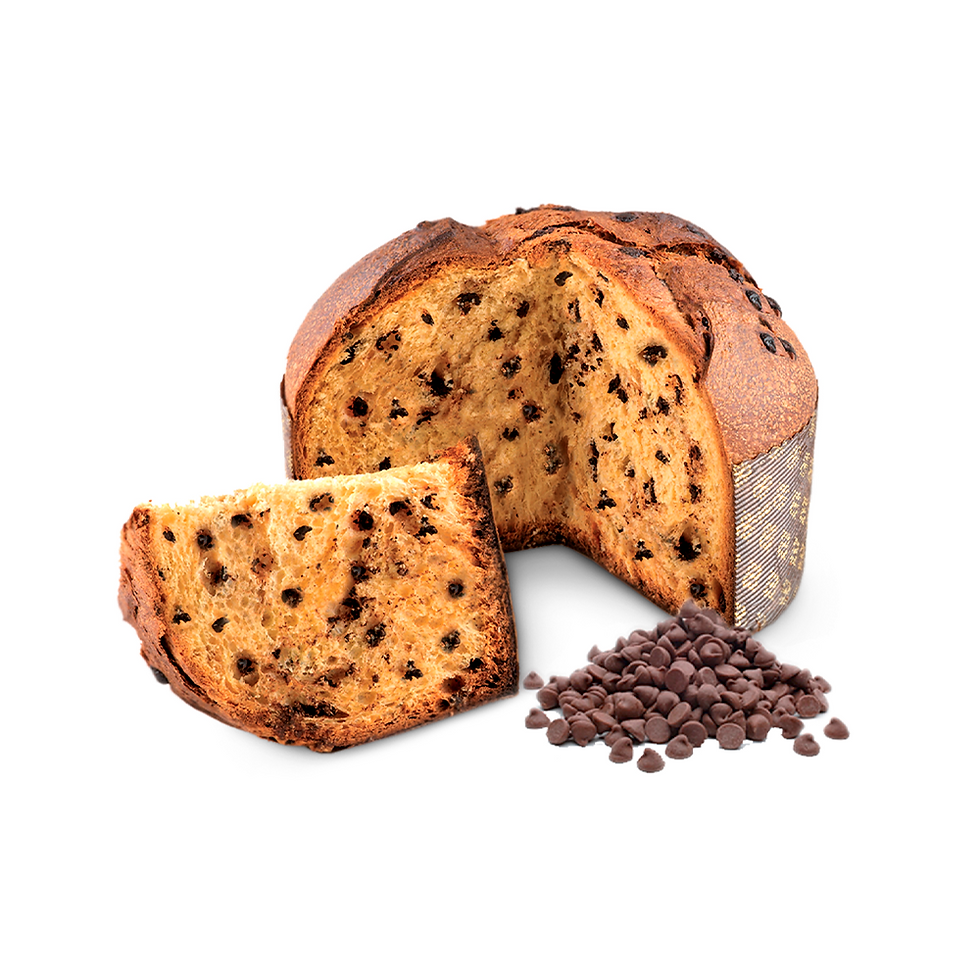'Tis the season to bake all the traditional abruzzese sweets. Cookies, cakes, pies... you name it, we've selected three most popular desserts for you to make for the Christmas holidays, to enjoy for yourself, with your family or to gift to relatives and friends, and we promise, everybody will love them!
#1 Cagionetti (Cagiunitt in local dialect)

“Cagionetti” or “calgionetti”, also known in local dialect as “caggiunitt’”, are one of the most widespread and famous of Abruzzo’s typical pastries.
They are similar to ravioli in shape, with crumbly, golden pastry and a filling that varies from district to district. The recipe includes a filling of chestnuts, honey, sugar, candied
citron, grated dark chocolate, toasted and ground almonds, rum, grated lemon peel and cinnamon. The two most well-known variations use either chickpeas or a classic grape jam called “scrucchiata”.
The traditional recipe starts by peeling chestnuts which are then boiled and pureed. Then honey is boiled and sugar, candied citron, chocolate, almonds, rum, grated lemon peel and cinnamon are stirred in. This mixture should be left for at least one day and the next day a glass of white wine
and a glass of extra virgin olive oil are added. When the pastry is ready, a thin dough is rolled out and cut into small circles, where the filling is added and the pastry is folded over and sealed, to be fried in plenty of extra virgin olive oil.
Our Family Traditional Recipe (to make tons of Cagiunitt, mandatory requirement in Abruzzo!)
Ingredients & Preparation:
For the dough
- 2.2 lb (1 kg) of all purpose flour
- 3 egg yolks
- 1 glass and a half of white wine
- 1 glass of seed oil
Make a volcano shape using the all purpose flour, add the 3 egg yolks, the wine and the seed oil in the center and start incorporating.
Once you have a nice soft ball of dough, cover it with a plate or towel and let it rest for 15 minutes then start rolling it into sheet with the rolling pin or the pasta machine (use the thinnest pasta setting) to make thin sheets.
When the sheets are done, add spoonful of filling at approximately the same distance at the center of the pasta sheets, then fold it and start cutting into Ravioli shapes using the curved pastry wheel like the one we have in our store.

If you don't have one, you can purchase it here: https://www.destination-abruzzo.com/product-page/curved-pastry-wheel
Place a frying pan on the stove and add seed oil as needed, heat it up and start immerging the cagionetti. (see pics), they will quickly sink and come back to surface meaning that they are ready to be picked and placed on a tray with absorbing paper towel, then add confectioner's sugar to top them off! They are ready to be enjoyed!
Filling options:
Nutella
Scrucchiata (Grape jam)
Almond filling Cagionetti ingredients
2 cups (225 g) blanched almonds
1 teaspoon finely grated lemon zest
1 teaspoon finely grated orange zest
½ cup (125 ml) wildflower honey
Walnut filling Cagionetti Ingredients
2 cups (225 g) walnut halves or pieces
2 teaspoons finely grated lemon zest
½ cup (125 ml) wildflower honey
If you don't have the kitchenware tools, we've got you covered! Check out our Made in Italy high quality kitchenware selection here:
#2 Torcinelli

Traditionally “torcinelli” or “turcinill’”, are historic Christmas delicacies that are a speciality of Abruzzo, and particularly the Province of Pescara: they are about 15-20cm long and have a distinctive twisted shape, golden brown on the outside and yellowish white on the inside. A peculiarity of this pastry product, which is mainly prepared in country areas, is the addition of boiled potatoes, which are first peeled, then mashed to form a paste. This is then
mixed with the other ingredients of the recipe: flour, eggs, sugar, aniseed and brewer’s yeast.
The mixture must be rolled by hand into small cylinders that are twisted and deep-fried in olive oil. When cooked, they are dusted with sugar before serving.
Let's see in detail the recipe with the ingredients and preparation.
400 g of boiled potatoes
1 bag of yeast
300 g of flour
70 ml of milk
1 egg
2 tablespoons of sugar
grated rind of one lemon
1 egg
50 ml of white wine
rise for 3 hours
Boil the potatoes and allow to cool them down, then peel and mash them.
In a bowl, add the flour, yeast, add the egg and mix, add the milk, wine, sugar, salt, and lemon zest.
The dough must be dense and compact. Leave to rise for 3 hours or until doubled
heat the oil in a large pan.
Take some dough and twist it into an elongated shape.
Pour into boiling oil and brown them well.
Drain the torcinelli on absorbent paper and roll them in sugar and serve.
#3 Parrozzo


“Parrozzo” (or “parrozzino”, depending on the size), is a typical Pescara cake, made of a beaten mixture with a crucial addition of almond flour and untreated peach and apricot seeds, oven-baked and then coated with dark chocolate (37-39% cocoa butter).
A traditional cake with a dark exterior and reddish yellow inside, with a unique flavor created by the almond and chocolate combination, but with an aftertaste of oranges, excellent when consumed with sweet and sparkling wines, or with orange-based liqueurs. “Parrozzo” is made by beating together eggs, sugar, superfine flour, almond flour and added anhydrous vegetable fats. The mixture is poured into molds and then baked in the oven; when ready they are removed from the molds and it is left to cool then coated with dark chocolate. When the coating has set the cake can be packaged.

In the distant past, Abruzzo country folk made what they called “pane rozzo” (coarse bread), for personal consumption: a dome-shaped cornmeal loaf baked in wood-burning ovens, and not to be confused with the wheat flour, white bread sold to the upper classes. At the beginning of the last century the confectioner Luigi D’Amico had the idea of making a sweet version, reproducing the yellow of the cornmeal by using eggs, imitating the dome-shaped form and adding a coating of fine
dark chocolate to copy the dark areas of the burned surface, characteristic of wood-burning ovens, and following the advice of Gabriele d’Annunzio, he called it “Parrozzo”. This Pescara poet was generous in the rhymes he dedicated to his favorite cake. Other artists and literati in Abruzzo contributed to the creation of this new cake: Luigi Antonelli, playwright and theatre critic, who wrote Storia del Parrozzo; Armando Cermignani, a great potter who designed the colorful box; Maestro Di Jorio who wrote the music for the “Parrozzo”, with lyrics by Humanist Cesare De Titta. “Parrozzo” brands and patents were registered in 1926.
Check out the translated recipe and the original blog post with the Parrozzo recipe from our loved blogger and friend Mary - Un'Americana tra gli Orsi here.
Ingredients:
3 eggs
1 cup and 2 tablespoons (240 g) of sugar
3.3 fl oz (100 ml) of sunflower oil
3.3 fl oz (100 ml) of white vermouth
1 cup and 1/2 (240 g) of flour
1/2 sachet of baking powder approx. 1 teaspoon (8 g)
0.8 oz (25 g bitter almonds ground into flour)
Topping
7 oz (200 g) of dark chocolate
2 teaspoons of seed oil
Method
Preheat the oven to 338 F. (170 degrees Celsius). Beat the eggs with the sugar very well until the mixture is frothy and doubled in volume. Incorporate the oil and then the vermouth. Add the sifted flour with the baking powder and finally the almond flour. Gently mix with a spatula so as not to dismantle the dough. Pour the dough into a greased and floured parrozzo dome mold and bake in the oven for 60/70 minutes. Check the cooking by doing the toothpick test and if necessary, cook for a few more minutes.
To complete
Let the cake cool for about ten minutes then take it out of the mold, put it on a wire rack and leave to cool completely. Once cold, it can be glazed. Break up the dark chocolate and melt it in a double boiler, adding the oil when the chocolate is almost completely melted. Mix well to remove the lumps and pour over the top of the cake. Using a spatula, spread the chocolate over the entire surface of the Parrozzo. Let it solidify and enjoy!
Happy Immacolata Concezione , let the Christmas Holidays begin!
Wishing you all the best,
Pietro & Angela and all our contributors!






















































Comments